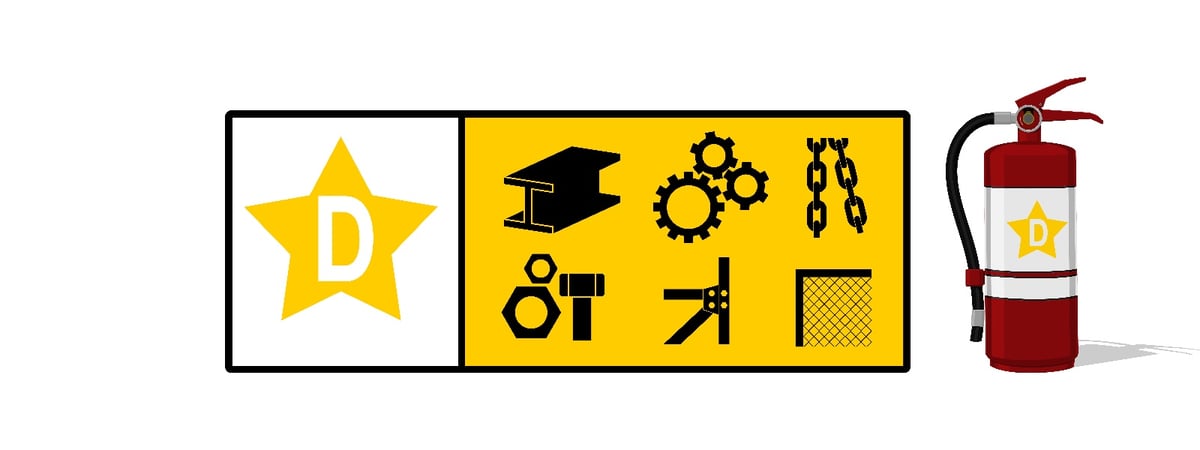
Not all fires are created equal, which is why a classification system has been developed to help identify different types of fires. These classes are determined by the fuel source of the fire. Furthermore, the class of fire also determines what type of extinguishing agent, or class of extinguisher, will be effective in putting that fire out.
One class of fire that is lesser-known and not as common is the Class D fire. Class D fires can be extremely hazardous and require very special types of extinguishers to put them out.
Read on to learn more about what a Class D fire is and what types of extinguishers qualify as Class D fire extinguishers.
WHAT ARE CLASS D FIRES?
Class D fires are those that occur from combustible metals, such as aluminum, titanium, magnesium, lithium, zirconium, sodium, and potassium.
These types of fires usually occur in industrial, manufacturing, or laboratory settings when the metal fines - tiny, thin pieces of metal, often shavings or dust generated during the machining process ignite, becoming the fuel element in the fire triangle (fuel, oxygen, heat plus a chemical reaction).
Class D fires can cause significant damage and are not simple to put out.
WHAT TYPE OF EXTINGUISHERS ARE RATED AS CLASS D FIRE EXTINGUISHERS?
Unfortunately, Class D fires cannot simply be extinguished with water or just any extinguishing agent. Water interacts with the combustible metal intensifying the fire, increasing the heat and spreading molten metal.
Thus, it is imperative that only a Class D fire extinguisher is used to extinguish a combustible metal fire. The best way to extinguish these fires is by smothering them & eliminating the oxygen element. The agent also helps to absorb the heat from the fuel.
To date, the only type of Class D fire extinguisher is the Dry Powder extinguisher. The powder agent used may be either powdered graphite, granular sodium chloride or copper-based, all of which are effective at separating the fuel (the ignited combustible metal) from the oxygen.
While dry powder extinguishers are effective for Class D fires, they are not effective for any other class of fire.
It is important that those working around combustible metals understand the unique properties of Class D fires as well as how (and when) to properly and safely operate a Class D fire extinguisher.
ARE YOU PROTECTED BY THE CORRECT FIRE EXTINGUISHER?
Do you own, manage, or work in a setting that handles combustible metals? If so, it is vital that you and your employees are protected by a Class D fire extinguisher.
If you are unsure whether or not you have the best fire extinguisher for your hazards, call the experts at Koorsen Fire & Security. They can help make sure that you and your property are protected by the most effective extinguishers for your setting. Koorsen can also provide you and your employees with fire extinguisher training to increase everyone’s safety. Contact them today.




